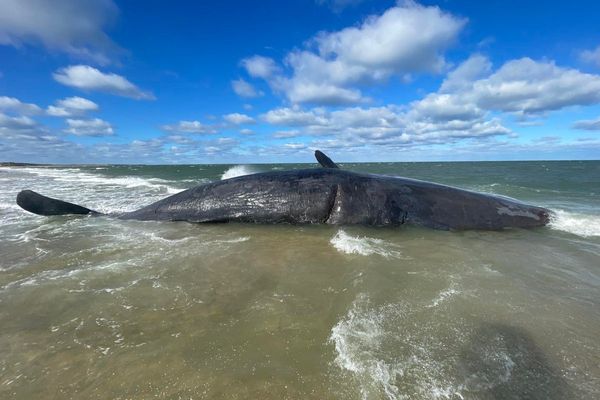It was late one night, the story goes, when the ghost of Monnow Valley struck. Liam Gallagher was sleepless enough – he was staying in room three of the studio deep in the remote Welsh countryside, “the haunted one” according to the woman who ran the place. He’d often wake up in the morning to find his furniture had moved around in the night (not so much the work of a vengeful poltergeist as a piss-taking Noel). And then, one dark night at 2am, a black and beaming figure was seen stalking the rooms like a narcotic Nosferatu.
“Everyone was in bed, so I went skulking round people’s rooms while they were asleep,” Gary “Mani” Mounfield told a 2004 Oasis documentary. High on mushrooms, the Stone Roses bassist had hotwired a tractor at Rockfield Studios up the road – where his band were then recording their 1994 Second Coming album – and driven to Oasis’s studio to hunt for drugs and alcohol. “I spotted a big nugget of hashish by the side of somebody’s bed and I was reaching over to grab it and they were petrified!”

It's a tale that encapsulates the mischievous charm of the man known as Mani, who sadly died yesterday aged 63. Not only was he the definitive bassist of the baggy era and much of the decade beyond – his deeply melodic basslines always an ear-catching, groove-setting counterpoint to guitarist John Squire’s guitar pyrotechnics – but an amenable figure who, more than many of his peers and bandmates, really was adored. If Shaun Ryder was Madchester’s drug-widened mind and Bez its saucer eyes, Mani was its broad, welcoming smile. Funny, friendly and inclusive, he was a unifying character across the alternative rock world; a man who didn’t just loosen up the indie rock sphere to allow the poutier kids to dance, but bonded it too. For the Roses, Oasis, Primal Scream, Inspiral Carpets, Ocean Colour Scene and many more, Mani was inspiration, compadre, rejuvenator and partner in crime. In a half-shadowed kind of way, Mani was Nineties rock music.
It's no accident that Mounfield was credited with reinvigorating two of the era’s most pivotal bands. His arrival in The Stone Roses in 1987, in thrall to funk and northern soul, was the Promethean moment that changed them from a promising indie-pop act jangling their way through “Sally Cinnamon” to a scene-setting, era-owning amalgam of guitar cool and dance abandon. “When Mani joined it almost changed overnight,” Brown said. “It became a totally different groove…Straight away, everything just fell into place.” And you can hear it in the way Mani’s coiled bass hooks instantly became the moving, grooving sands upon which their subsequent releases were built.
It’s Mani who bounces you around “Elephant Stone” like a trampoline park bully. Who lures you through the cosmic mist into “I Wanna Be Adored”. Who sets your pulse to “breakneck” in the opening moments of “She Bangs The Drums” and your feet to “James Brown” as “I Am The Resurrection” is reborn as a psych funk workout. Just think the words “Fools Gold” and Mani lives rent free your brain for the next four minutes.
As the roiling heartbeat of the Roses’ seminal debut album, then, Mounfield was arguably the quintessential dance rock musician. But his impact wouldn’t stay so narrow. When the Roses split in 1996, following their disappointing second album and some heartbreakingly tuneless festival shows, Mani slipped easily into Primal Scream, rejuvenating another band (the Scream were considering splitting after an arduous period around their 1994 Americana album Give Out But Don’t Give Up) and proving himself once more an adaptable and electrifying influence. His bass on tracks such as “Kowalski”, “Kill All Hippies” and “Swastika Eyes” was of a more intense, industrial and motoric hue, but also far more driving and compulsive than his Stone Roses work. Revolving to face the tech-rock future rather than the funk classics, Mani was just as crucial in the Scream’s celebrated leap to experimental electro rock in the late-Nineties as he had been to the Roses’ defining indie-dance in 1989.
When the Roses reformed in 2011, Ian Brown’s voice being as - shall we say - dog-chewed as it is, the success of their six years of high-profile shows was entirely down to the character and individuality of the band’s other component parts. Alan “Reni” Wren’s insistent, evocative beats. John Squire’s crystal-thunder guitar. And perhaps most of all, Mani’s resounding, uniting and intoxicating basslines, as individual and recognisable as alt-rock’s other bass greats – Peter Hook, Kim Deal, Andy Rourke, Alex James, Tina Weymouth. Almost fifteen years after “Elephant Stone”, LCD Soundsystem’s James Murphy would garner much kudos on his 2002 debut single “Losing My Edge” for being “the first guy” to play dance music to the rock kids. Actually, Mani got there first, and the ghost of Monnow Valley will be haunting dancefloors for many decades to come.







